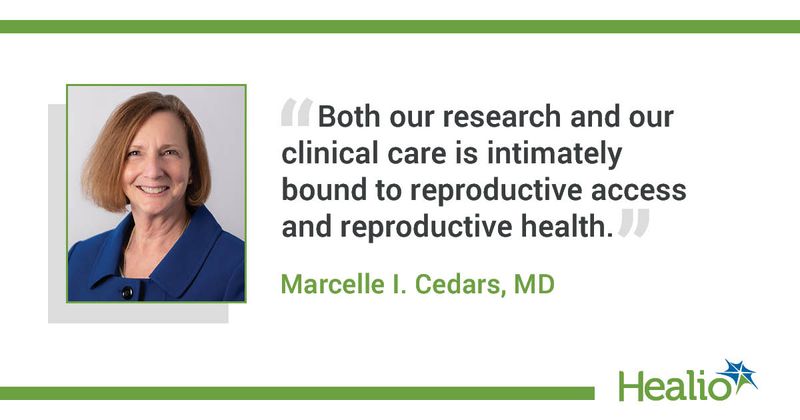Q&A: ASRM focuses on access, networking, inclusion at annual meeting
Click Here to Manage Email Alerts
From Oct. 22 to 26, ASRM will host its Scientific Congress & Expo in a fully in-person format for the first time in 3 years.
The conference, which is being held in Anaheim, California, will offer attendees the chance to participate in interactive sessions with colleagues and learn about the newest developments in reproductive medicine.

In this interview, Marcelle I. Cedars, MD, the current president of ASRM and director of the UCSF Center for Reproductive Health in San Francisco, spoke with Healio about the key facets of this year’s conference and what she is looking forward to most.
Healio: How has the conference evolved since it began?
Cedars: This meeting marks over 75 years for the American Society of Reproductive Medicine, and as the field has evolved, so has the meeting. Our goal is always to be as responsive to the membership and as educational as possible. This is our first fully in-person meeting since 2019, so we’re incredibly excited to focus on one of the key aspects of this meeting throughout its history, which is networking and interpersonal interaction. This is important for all the members of our society and for people working in this field, whether they be physicians, nurses, mental health providers, genetic counselors, scientists or embryologists. We really want everyone to be able to get together, to interact, to learn from each other and work together to improve health care for our patients.
Healio: What is unique about this year’s program?
Cedars: First and foremost, we’d have had our heads in the sand to not realize that this has been a traumatic year for reproductive health, for reproductive access. Our field — for better or worse — has always been closely linked with the abortion issue because we’re working with gametes, with embryos, with the beginning of pregnancy, so both our research and our clinical care is intimately bound to reproductive access and reproductive health. This has been a critical area for this year in particular.
We have a number of sessions this year where we’re talking about health, policy and society, including a special session that we’ve added with a lawyer, someone who fights for reproductive justice and policymakers to talk about abortion, personhood and how public policy and society have impacted in vitro fertilization. We have someone from the Biden White House to talk about society and health care, particularly with respect to women’s issues and access for health care and research in women’s health care. Throughout the conference, that is going to play a pivotal role as it has in society in the past year; it will be mirrored in our meeting this year.
As I mentioned, we really want this year to focus on interactive sessions. There are more sessions where the presenters will be more interactive with each other and with the audience — so not one person speaking to a group, but a small group interacting on the stage and also interacting with the audience. That’s where learning happens, through those interactions. While there will be plenary and other sessions, we’re going to have fewer formal didactic presentations, particularly within the symposia, and those will be much more interactive. We’re going to have electronic poster sessions, have key posters that have been selected to be brought into the product area for presentation. We’re going to do MED talks — our version of TED Talks, short bursts of information to provide information about as many topics as possible to as many people as possible in a very accessible way.
Healio: What are you looking forward to most this year?
Cedars: I’m looking forward to just being face-to-face with people. We’ve all been doing lots of Zoom meetings this past year, and it’s just different to be face-to-face — the type of interactions you have, the type of discussions you have, the type of arguments and debates that you can have face-to-face are very different. That’s the most exciting to me, just that we’ll all be together.
We have a few other new things this year. People have talked a lot about working on the pipeline and diversity. Our president-elect, Michael Thomas, MD, is starting something in Anaheim that will be followed through in our subsequent meetings, where we invite members and participants in underrepresented medical schools — this year we’re working with the Charles R. Drew University of Medicine and Science in Willowbrook, California — to be our guests at the meeting, and to have special sessions to introduce them to our field. While we’re bringing together our members, we want to bring new people into the field and energize young people who may be interested in science or are training in other STEM areas, about this amazing field. Our future leaders may yet come from those who are not even aware this field exists or that it would hold possibilities for them.
Healio: Is there anything else that you want to highlight about this year’s conference?
Cedars: One of the things we tried to do in the plenary sessions is to go from the very small level of microRNA to how you work with “big data,” and to cover that range across a number of topical areas whether that be ovarian aging, recurrent pregnancy loss, gamete generation or biology. So, we’ve tried to focus our plenaries on bringing the best science but putting it in the context of how it impacts our society and how it impacts our field.

